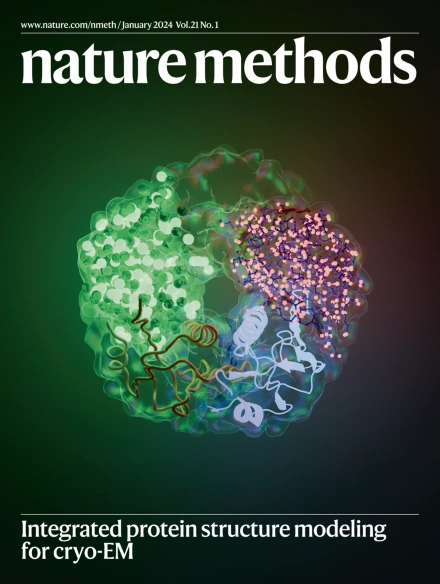Global analysis of endogenous protein disorder in cells
IF 36.1
1区 生物学
Q1 BIOCHEMICAL RESEARCH METHODS
引用次数: 0
Abstract
Disorder and flexibility in protein structures are essential for biological function but can also contribute to diseases, such as neurodegenerative disorders. However, characterizing protein folding on a proteome-wide scale within biological matrices remains challenging. Here we present a method using a bifunctional chemical probe, named TME, to capture in situ, enrich and quantify endogenous protein disorder in cells. TME exhibits a fluorescence turn-on effect upon selective conjugation with proteins with free cysteines in surface-exposed and flexible environments—a distinctive signature of protein disorder. Using an affinity-based proteomic approach, we identify both basal disordered proteins and those whose folding status changes under stress, with coverage to proteins even of low abundance. In lymphoblastoid cells from individuals with Parkinson’s disease and healthy controls, our TME-based strategy distinguishes the two groups more effectively than lysate profiling methods. High-throughput TME fluorescence and proteomics further reveal a universal cellular quality-control mechanism in which cells adapt to proteostatic stress by adopting aggregation-prone distributions and sequestering disordered proteins, as illustrated in Huntington’s disease cell models. This article reports a method based on a bifunctional chemical probe called TME and a workflow named RUBICON to capture, enrich and profile endogenous disordered proteins in cells. The method enables a proteome-wide analysis of protein disorder via high-throughput fluorescence and mass spectrometry-based proteomics.

细胞内源性蛋白质紊乱的全球分析。
蛋白质结构的无序性和灵活性对生物功能至关重要,但也可能导致疾病,如神经退行性疾病。然而,在整个蛋白质组范围内描述生物基质中的蛋白质折叠仍然具有挑战性。在这里,我们介绍一种使用双功能化学探针(名为 TME)的方法,用于原位捕获、富集和量化细胞中的内源性蛋白质紊乱。当 TME 选择性地与表面暴露和柔性环境中含有游离半胱氨酸的蛋白质共轭时,会显示出荧光开启效应--这是蛋白质紊乱的显著特征。我们使用一种基于亲和力的蛋白质组学方法,既能识别基本无序的蛋白质,也能识别在压力下折叠状态发生变化的蛋白质,甚至能覆盖低丰度的蛋白质。在帕金森病患者和健康对照组的淋巴母细胞中,与裂解物分析方法相比,我们基于 TME 的策略能更有效地区分两组患者。高通量TME荧光和蛋白质组学进一步揭示了一种普遍的细胞质量控制机制,在这种机制中,细胞通过采用易聚集的分布和封闭无序蛋白来适应蛋白质静压力,亨廷顿氏病细胞模型就说明了这一点。
本文章由计算机程序翻译,如有差异,请以英文原文为准。
求助全文
约1分钟内获得全文
求助全文
来源期刊

Nature Methods
生物-生化研究方法
CiteScore
58.70
自引率
1.70%
发文量
326
审稿时长
1 months
期刊介绍:
Nature Methods is a monthly journal that focuses on publishing innovative methods and substantial enhancements to fundamental life sciences research techniques. Geared towards a diverse, interdisciplinary readership of researchers in academia and industry engaged in laboratory work, the journal offers new tools for research and emphasizes the immediate practical significance of the featured work. It publishes primary research papers and reviews recent technical and methodological advancements, with a particular interest in primary methods papers relevant to the biological and biomedical sciences. This includes methods rooted in chemistry with practical applications for studying biological problems.
 求助内容:
求助内容: 应助结果提醒方式:
应助结果提醒方式:


